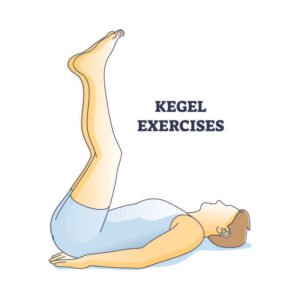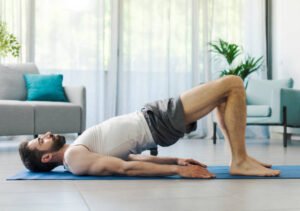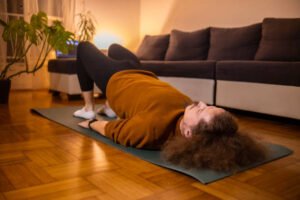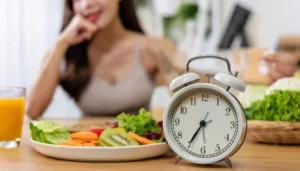Most girls and women suffer from period pain, or what is called period pain or dysmenorrhea, at a specific time every month, starting from puberty until menopause, which is a long period ranging between 40 and 45 years of a woman’s life.
The menstrual cycle is often accompanied by painful cramps that begin a day or two before menstrual bleeding, and the cramps and period pain usually end when bleeding begins. These cramps lead to the release of chemicals called prostaglandins, which are released into the uterine lining when the lining starts to collapse and the uterus is shed. Of which.
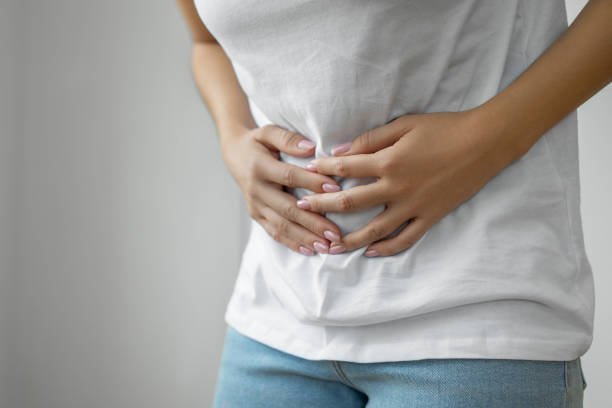
Severe period pain is evidence of what?
Feeling period pain may be one of the most annoying experiences for women, but this pain occurs for a good reason. Since puberty, a woman’s uterus prepares every month to receive an embryo that will grow inside it after the egg is fertilized. It builds a strong lining of the uterus that can contain and nourish the awaiting fetus. The egg is not fertilized and pregnancy does not occur. The muscles of the uterus contract strongly to shed the uterine lining, separate it from its wall, and push it away from the body through the vagina. This process causes blood vessels in the uterine lining to rupture, causing menstrual bleeding.
Strong period pain is often at its peak on the first and second days of menstruation, where the pain is concentrated in the lower abdomen, lower back, pelvis, thigh, and hip muscles, and may also be accompanied by digestive system disorders such as vomiting and diarrhea.
The intensity of period pain ranges from moderate to tolerable for some women, to strong for others. This variation in pain intensity is due to several reasons, including:
- Severe bleeding in some women.
- The size of the blood clots that are pushed through the cervix.
- The general health conditions of each woman, and the ability to tolerate and deal with pain.
Tips to relieve period pain
period cramps and pain are a very normal part of the monthly menstrual period, but they may prevent some people from practicing their daily activities such as studying or working. To alleviate the severity of these pains, it is recommended to follow the following tips:
Hot water compresses
Place a hot water bottle or hot water compress under the abdomen or lower back, or take a shower with warm water, as the heat stimulates blood flow to the pelvis and relaxes the uterine muscle tissue, which relieves period pain. It is one of the most appropriate methods for treating period pain in girls.
Exercise
Practicing some simple exercises and light sports, such as walking or yoga exercises, is useful in treating period pain. Exercise helps increase blood flow and relieve cramps.
Drinking water
Drink plenty of water, as water reduces bloating, which increases the severity of symptoms, especially for those who suffer from diarrhea or vomiting during menstruation, as drinking fluids helps compensate for this loss of body fluids so that dehydration does not occur in the body, so women are advised to drink 6 Up to 8 cups of water daily, especially during menstruation.
Healthy diet
Changing eating habits is considered the most important means of treating period pain, as it enhances the body’s ability to resist pain. Below we mention the most effective steps in changing one’s diet:
- Reduce the intake of salty foods during menstruation, because salt increases the risk of dehydration and bloating and raises blood pressure, thus increasing the rate of cramps and period pain.
- Stay away from simple sugars, crackers, and fast foods. Some women find relief during their menstrual cycle by eating healthy foods including vegetables and fruits, some of which act as anti-inflammatory agents, such as tomatoes, cherries, and colored peppers. Eating fish rich in omega-3, calcium-rich grains, almonds, and dark leafy vegetables reduce period pain. They support health at the same time, and it is best to eat these foods throughout the year, not just during the menstrual cycle.
- Avoid smoking, coffee, and stimulants in general, as they increase the severity of the pain.
- Drink a lot of hot drinks, such as green tea, or boil some soothing herbs, such as chamomile, ginger, mint, and fennel, which are ways to treat period pain with herbs.
Massage
A light massage of the lower abdomen and lower back using essential oils for 20 minutes can help reduce period pain, as essential oils and the massage method used have many benefits.
Aromatic oils, such as sage, lavender oil, and marjoram oil, contain many beneficial substances for the body. You can obtain ready-made massage oils from the market, or make these oils at home.
It is recommended to dilute the essential oil by using a carrier oil such as vegetable oil, walnut oil, grapeseed oil, or almond oil. Healthy concentrations must be adhered to, which is one drop of essential oil for every teaspoon of carrier oil.
It is also beneficial to lie on the back with a pillow under the knees or to lie on the side with the knees pressed to the chest, as this position reduces back muscle tension and contributes to treating period pain.
Analgesic medications
It is recommended to take some pain-relieving drugs and medicines to treat severe period pain, such as non-steroidal anti-inflammatory drugs, including ibuprofen, as these medications work to reduce the secretion of prostaglandins, thus reducing swelling, bloating, and period pain. It is preferable to take medications about 12 hours before the onset of pain and when you feel your period coming.
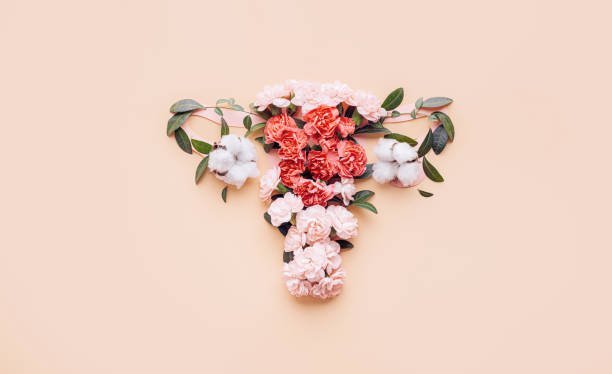
Types of period pain
There are two types of period pain or menstrual pain. Primary dysmenorrhea is the most common and occurs as a result of normal uterine contractions during the menstrual cycle. Secondary dysmenorrhea is a term given to period pain that indicates the presence of a problem with the woman’s reproductive system, and period pain in this case may be caused by one of the following conditions:
- Pelvic infection: It is an infection that affects the vagina and then spreads to the cervix and uterus, then spreads to the rest of the reproductive system. Types of sexually transmitted infections, such as chlamydia infection, are often behind pelvic inflammation.
- Fibrosis of the tissues of the uterine wall.
- Endometriosis: A condition in which the uterine lining grows outside the uterus and on the organs adjacent to it.
- Cervical stenosis: which may be caused by a wound in the cervix, or a deficiency in the hormone estrogen, as in cases of menopause and menopause.
You must visit a doctor when you continue to suffer from period pain despite taking painkillers and following all the advice that will reduce the severity of the pain, or when the pain continues for more than 3 days, then you must visit a doctor to diagnose the cause of the pain.
Some women may wonder: Is severe period pain evidence of pregnancy? The answer is no, there is no relationship between pregnancy and period pain. Rather, severe pain similar to period pain, accompanied by bleeding and the passage of clotted blood clots, may indicate a miscarriage, and this condition is considered an emergency that requires immediate medical intervention.
Positions to relieve period pain: Do they exist?
Yes, some positions may help relieve period pain, and they include the following:
Head-to-knee position
This position helps stretch the hamstrings, in addition to the pelvic area and buttocks, and can be performed by following the following steps:
- Extend one foot straight out, placing the sole of the other foot on the inner thigh of the extended foot.
- Bending with the torso towards the outstretched foot.
- Sit cross-legged, then replace the feet and repeat the previous steps.
- Leg width apart position
- This position aims to stretch the tendons, tighten the thigh muscles, and straighten the spine, by sitting upright and then spreading the legs apart while keeping them straight.
Forward bend position
The cycle is sometimes a reason for exercising that will exercise the spine. This position aims to tighten the hamstrings in addition to exercising the spine. It is done
As follows:
- Sit up straight.
- Hold your feet and bend your torso towards them.
- Child’s position
This position helps relieve back pain associated with the menstrual cycle, and it is one of the most important yoga positions. In addition, it provides an opportunity to relieve the brain from thinking, and is as follows:
- Sit on your knees.
- Space your knees and lie on your stomach while keeping your knees bent.
- Extend the arms in front.
- Knee-to-chest position
This position helps relax the back and abdominal muscles, which may then help relieve period pain. It may also help increase blood flow towards the abdominal area, which may also help relieve period pain, and can be represented as follows:
- Lie on your back.
- Bend the knees towards the chest area.
Comfort position
The rest position is the easiest, but it may have many benefits, as it helps straighten the back, relieve pressure on it, and relax the brain. It is represented by lying on the ground with your back straight, without any twisting.
Bending position
Asking about positions to relieve period pain leads to talking about this position, which consists of standing upright, and then bending with the torso toward the feet. This position may help relax the muscles of the neck, back, hamstrings, and thighs, which may help relieve pain.
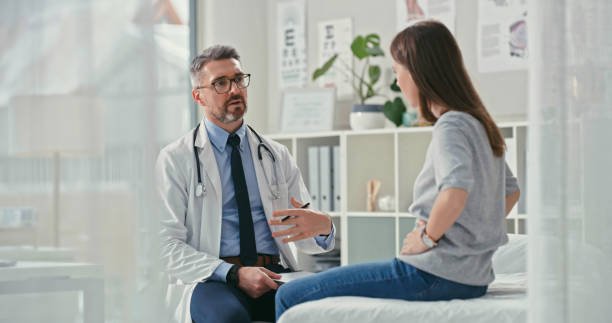
What drink relieves menstrual pain?
- Ginger: It has an effect that helps relieve menstrual bleeding.
- Myrtle syrup: It is believed to have an effect in reducing heavy menstrual periods in women.
- Mulberry leaves: They have an effect that helps relax the muscles of the uterus and relieve cramps associated with the menstrual cycle.
- Cinnamon.
What should I drink on the first day of my period?
Ginger drink
Ginger can help relieve period pain and may have a similar effect to some painkillers such as ibuprofen. It is recommended to eat ginger 4 times a day during the first three days of the menstrual cycle. Ginger can be added to fennel seeds to achieve a better result.
Does chocolate relieve menstrual pain?
Dark chocolate comes with a lot of health benefits and relieving menstrual pain is one of them. According to a study published in Belitung Nursing Journal, this food works great during menstruation. Dark chocolate, which is full of magnesium, can help relax the muscles there, relieving Contractions.
Are there natural ways to relieve menstrual pain?
Massaging the abdominal and back area may also help relieve pain using some aromatic oils, such as lavender oil, provided that these oils are first diluted with other oils such as almond oil.

